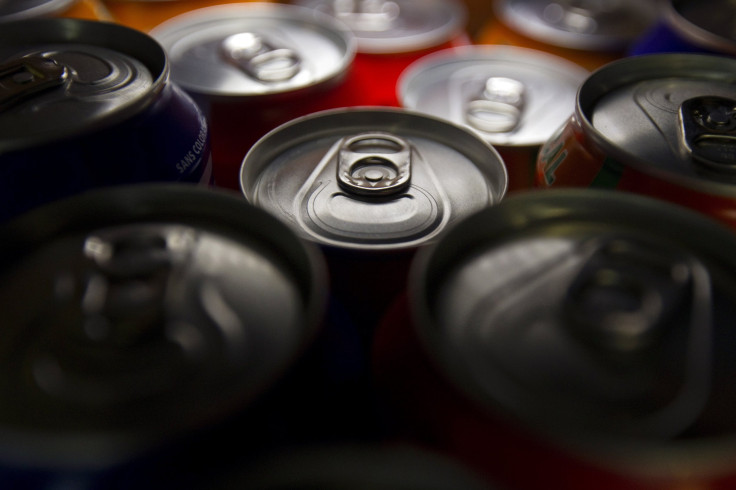Struggling Soda Companies Diversify, Following Tobacco's Lead

In a fizzling global soda market, beverage companies are taking cues from the tobacco industry. Just as cigarette companies saw decades of declining sales amid changing consumer tastes, health warnings and an increasingly harsh regulatory environment, soda makers are now experiencing similar hard times -- and they're responding with borrowed marketing ploys.
Big Soda has long recycled ideas from Big Tobacco. Cigarette filters, intended to reduce the amount of smoke inhaled, entered the industry in the 1920s, and by the 1960s dominated the market as researchers linked smoking to lung cancer. Then soda leaders Dr. Pepper (now Dr. Pepper Snapple Group Inc.) and Coca-Cola Company introduced diet sodas sweetened with sugar alternatives and marketed to athletes and weight-conscious consumers.
Not unlike cigarette companies, many soft-drink makers are now attempting to manage falling sales of core products by diversifying into alternatives for health-conscious consumers. Tobacco companies have bought electronic cigarette makers and added more flavors like menthol while soda companies offer teas with antioxidants and far less sugar than soft drinks have. Of course, the health merits of the alternatives are controversial.
“It’s our new normal,” Coca-Cola Co. CEO Muhtar Kent told investors Tuesday. The environment for nonalcoholic drinks is "tough, no doubt," but "we know what can be done, and we will do it," he said.
One of Coca-Cola’s newest products is Coca-Cola Life, a “mid-calorie” soda (between zero-calorie and full-calorie) sweetened with stevia and sold in 8-ounce green-labeled glass bottles. The drink, already sold in the U.K., Sweden, Mexico, Argentina and Chile, popped up in parts of the southern U.S. last month and will launch nationally in November.
“Consumers are increasingly health-conscious,” said Joseph Agnese, a consumer staples analyst for S&P Capital IQ. “Soda companies try to respond by increasing their exposure to faster-growing categories like juices and bottled water while also using substitute ingredients in soda to try to change the perception on those products.”
They’re also marketing to please the health-minded. Dr. Pepper Snapple Group describes itself as “built on balance – balancing the calories we consume with the calories we expend” with a portfolio that contains “great-tasting products with a variety of calorie options” for “families adopting a fit and active lifestyle.” Coca-Cola has even launched anti-obesity ad campaigns.
Coca-Cola, the world’s largest beverage company, reported this week that its profits dropped 14 percent in the third quarter from a year ago. After promising in February to cut $1 billion in costs by 2016, Kent vowed to reduce costs by $3 billion a year by 2019 through a mix of better marketing and a more efficient global supply chain. Soda sales declined in North America and global demand remained flat over the July-to-September period.
Growth in U.S. carbonated beverage sales began slowing in the 1970s, and U.S. soda sales have fallen for nine straight years, according to Cowen & Company research.
The outlook for less-sugary drinks is sweeter. Analysts expect teas and bottled water, followed by energy drinks and juice mixtures like Powerade and Vitamin Water, to become Coca-Cola’s new growth driver. But even orange juice is taking a hit, due to rising prices and a perception that the sugar content outweighs vitamin C benefits. Consumption of orange juice is down 45 percent from its 1998 peak and at its lowest level since 1986, according to the U.S. Department of Agriculture. According to Trefis research, U.S. sales of ready-to-drink teas like Coca-Cola’s Honest Tea are expected to rise by an annual 6 percent through 2017. Soft drinks still account for the majority of the company’s sales.
PepsiCo Inc., Coca-Cola’s biggest rival, is also diversifying and trimming costs. CEO Indra Nooyi is cutting $5 billion over the next five years to boost profit. PepsiCo’s earnings rose by about 2 percent over the third quarter from the year-earlier period, but on the strength of its Frito-Lay and Quaker snacks businesses rather than soda. The company’s beverage revenues were flat, and sales of North American noncarbonated drinks offset a 1.5 percent decline in soft drinks sold.
“Youth consumption [of soda] is falling notably, which is unhelpful in terms of driving future volumes,” Cowen & Co. tobacco and beverage analyst Vivien Azer wrote in a recent research note.
Fewer young people are smoking cigarettes, too. The industry saw a 4 percent decline in cigarette consumption in the U.S. last year. Sales in Europe are falling faster, and consumption is slowing or contracting in several emerging markets as well. For the entire global market, which is 10 times the size of the U.S. market, tobacco consumption has been flat or growing by only 1 percent for the past several years.
So cigarette makers have expanded their offerings to include new flavors, like menthol, and electronic cigarettes, claiming each is less harmful than a traditional cigarette and could even help smokers quit. The Food and Drug Administration said in a preliminary assessment last year that menthol cigarettes, which are not regulated by the government, appeared to make it easier to start smoking and harder to quit. And the World Health Organization said in August that e-cigarettes pose “serious threats” to children and should be banned indoors.
In some ways, cigarette makers are better off than soda makers because nicotine addictions have a stronger hold on consumers, Azer said. Sodas are much less addictive and have a plethora of substitutes, from tap water to coffee. But for now, Coca-Cola and PepsiCo generate healthy amounts of cash despite the loss in volume, Agnese said.
“Coke has such a tremendous brand name,” he said.
© Copyright IBTimes 2025. All rights reserved.






















